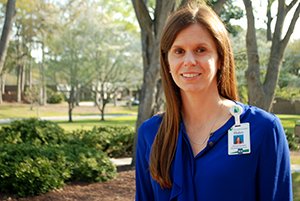Study: Ten times more children and youth are obese compared to 40 years ago
Family Health, Nutrition
Medical professionals are seeing an increase in certain conditions in adolescents, especially diabetes and asthma
An epidemic is on the rise as a new study found the number of obese children and adolescents has increased 10-fold over the last 40 years.
What has changed? Children today are consuming a large portion of their calories in soda and sugary drinks. What they eat is often fried, frozen, microwaved or from a fast food drive-thru. They spend too much time in front of the television or on social media.

The number of obese children and youth rose to 124 million in 2016 – more than 10 times higher than the 11 million considered obese in 1975. Furthermore, an additional 213 million children and youth were overweight in 2016. This is according to a new study published in October in The Lancet and has the World Health Organization “issuing a new alert.”
“Absolutely this is an epidemic,” says Dr. John Rowlett, Director of Pediatric Emergency Medicine for St. Joseph’s/Candler, who has written articles and given lectures on childhood obesity. “We are starting to actually see complications of obesity in children.”
The study was the largest of its kind as more than 1,000 researchers from around the world collaborated to analyze weight and height data in more than 31 million people ages 5 to 19 to identify obesity trends from 1975 to 2016. The study shows worldwide that roughly 5.6 percent of girls and 7.8 percent of boys are obese. In the United States, more than one in five young people are obese, according to the research.
Obesity in adults is defined by a person’s body mass index, which is the ratio between weight and height. A BMI of 18.5 to 24.9 is classified as a healthy weight; 25 to 29.9 is considered overweight; and 30 and over is obese. Cutoffs are lower among children and adolescents and vary based on age. Find your child’s BMI with this calculator on the Centers for Disease Control and Prevention website.
How did this happen?
The survey does not place blame on one entity specifically for this epidemic. One World Health Organization official, who was among the researchers, doesn’t blame the children. In fact, he blames governments for creating environments in which parents and children are surrounded by unhealthy food options and inadequate options for physical exercise.
Haley Cox, MS, RD, LD, St. Joseph’s Hospital Clinical Dietitian, says a lack of physical activity and unhealthy eating patterns are reasons why we are seeing a rise in childhood obesity. She says children are spending more time watching TV, playing video games and eating foods high in fat and sugar.
“So many diets are high calorie, high fat and high sugar,” Cox says. “We are consuming empty calories from an excessive intake.”
Dr. Rowlett says genetics also may play a factor. If one’s parents are overweight, the chances of the child being overweight are far more likely.
However, Dr. Rowlett agrees that one’s environment and cultural are the biggest factors in weight gain.
“It’s simply a math problem. You eat more than you exert,” Dr. Rowlett says. “Unfortunately, it’s become easier and easier to take in calories, in particularly empty calories, and we are less and less active.”
Health problems obese, overweight children may face
When Dr. Rowlett began pediatric medicine 35 years ago, he says type 2 diabetes in children was unheard of. It’s typically an adult-onset condition. Now, however, it’s among the most common conditions seen in adolescents, Dr. Rowlett says. The American Diabetes Association estimates approximately 193,000 Americans under the age of 20 have been diagnosed with diabetes.
“We never saw much in the way of a true medical burden from obesity in children; some, but not as much,” Dr. Rowlett says. “Now we are seeing more and more that obesity isn’t a disease of the future, it’s a disease of now.”
Diabetes isn’t curable. Once you develop diabetes, you are at risk for stroke, kidney disease and blindness, Dr. Rowlett says. He’s also concerned about the number of people in 20 years that will have to be on dialysis due to diabetes.
In addition to diabetes, other health conditions medical professionals are starting to see in overweight and obese children include hypertension, sleep disorders, high cholesterol, joint issues and asthma.
Cox adds that being overweight or obese as a child also can lead to negative self-esteem.

“We also know that if you are overweight as a teenager your chances of being overweight as an adult are far, far higher,” Dr. Rowlett says.
Obesity is a risk factor in adults for certain cancers, diabetes, heart disease, stroke and high blood pressure, just to name a few.
Prevention and solutions
It’s not all doom and gloom because being obese or overweight is preventable, controllable and even reversible.
“The good news for someone who is overweight is that you don’t have to get down to skinny or even to ideal body weight for your health to get better,” Dr. Rowlett says. “If you are 75 pounds over your ideal body weight, you don’t have to lose all 75 pounds. If you weigh 200 pounds and lose 15 pounds, your numbers are already better. Your lipids, blood pressure are already getting better long before you get to that idea weight.”
To help with weight loss and prevention, there are options for both children and parents. Cox suggests:
- Eating more fresh fruits and vegetables, lean meats and low-fat dairy.
- Focus on drinking water and milk, not juice.
- Let kids assist in meal/snack prep as much as possible so they will be more likely to try new and different foods. Children can learn to enjoy eating healthy this way because they helped make it.
- Encourage activity. Go for walks, walk the dog, ride bikes, play sports or anything to get moving.
- Avoid processed foods and limit fast food outings
Have a picky eater? Cox suggest the three-time rule: offer the food to the child three different times so they have multiple opportunities to try it and maybe find out they like it.
“It’s important to adopt healthy eating patterns as an entire family,” Cox says. “If children observe parents and older siblings consume healthy options, they are more likely to try it themselves.”
Dr. Rowlett also encourages parents to be good role models for children by choosing healthy eating habits and living active lifestyles. That too will help adults decrease their chances of becoming obese.
“Get kids on the right course early because it’s hard to get people back on track,” Dr. Rowlett says. “It’s not easy to lose weight. Food tastes good. We have to create opportunities and incentives for kids to eat better and spend more energy.
“Basically at the end of the day, if you are motivated to make change and willing to put in the work, you are going to change. If you want someone else to do it for you, it’s not going to happen – whether it’s obesity or diabetes or finances,” Dr. Rowlett says. “Your reality isn’t going to change until your habits change. You don’t have to be perfect every day, but every day can’t be a special day where you eat cake and ice cream all day.”
Memberships available through the St. Joseph’s/Candler Wellness Center
The St. Joseph’s/Candler Wellness Center partners with the YMCA to offer a two-week kids camp every summer. Children ages 12 and older can work out at the Wellness Center, located on the Candler Hospital campus, with supervision of a guardian. To inquire about memberships, call 912-819-8800 or visit our website.